In the golden autumn, visit Xiangcheng and enjoy the bountiful year amidst the fragrance of rice flowers

Wen Tu/Ying Zhigang
A handful of clear water, flowing fragrant from ancient times to the present. More than 2500 years ago, Wu Zixu, the Prime Minister of the State of Wu, proposed to build the city of Helu by "tasting the soil and water, like heaven and earth" and "considering other things, intending to build the city here". The city was named after this.
Suzhou Xiangcheng District has a beautiful ecological environment, profound cultural heritage, and abundant tourism resources.
There are lake resources represented by Yangcheng Lake and the Taihu Lake Lake; There are rural tourism resources represented by Lotus Island Scenic Area, Beauty Legs, and Yangcheng Lake Modern Agricultural Industrial Park.
There are ecological tourism resources represented by China Flower and Botanical Garden, Lotus Pond Moonlight Wetland Park, Shengze Lake Rose Garden, etc; There are historical and cultural resources represented by Shen Zhou, Wen Zhengming, and Sun Wu.
There are "Yangcheng Lake Eight Fresh" food resources represented by Yangcheng Lake hairy crabs; There are wedding cultural resources represented by the Suzhou Little Bund and intangible cultural heritage folk craft resources represented by the Imperial Kiln Golden Bricks in Xiangcheng.
In recent years, Xiangcheng District has combined the overall tourism planning, integrated resource elements, and focused on creating original ecological rural tourism destinations in the Yangtze River Delta region with "typical Jiangnan and water town style" characteristics.
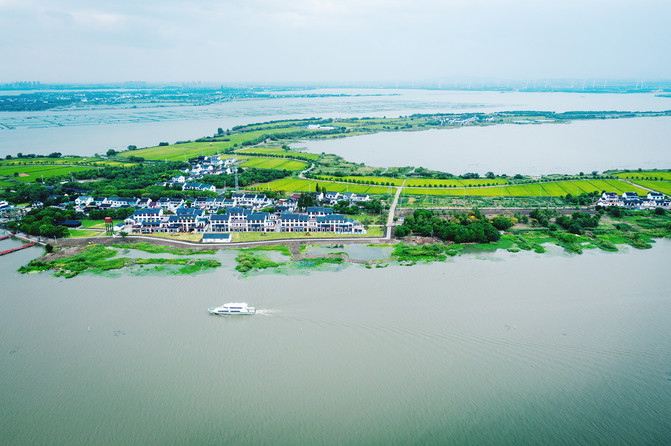
Day 1 itinerary
First stop: Imperial Kiln Brick Museum
The Suzhou Imperial Kiln Brick Museum is located north of the Imperial Kiln Garden in Yuanhe Street, including a tourist center, a brick museum, an exchange center, production buildings, ancillary landscape engineering, and site protection structures. By drawing inspiration from the typical techniques of Suzhou traditional gardens in the construction of corridors, a visual relationship is formed that is both divided and connected, with both inside and outside scenery. In terms of material selection, the walls and floors are all paved with hollow recycled bricks and blue bricks, inheriting the design concept of "exquisite carving and exquisite craftsmanship" of Soviet classical gardens.
Gold bricks produced in the Lumu Imperial Kiln in Xiangcheng District, historically used for the decoration of palaces, altars, temples, tombs, and dormitories in imperial architecture, are now a national intangible cultural heritage.



Due to its dense texture and the sound of gold and stone when struck, it was specially used in ancient times to transport "Jingcang". In the theory of Yin Yang and Five Elements, the bricks used for paving the ground were made of "earth" and "gold". Its "water and fire are both balanced, and its quality is thousand and autumn" has the meaning of "river and mountain, eternal, and long-lasting". Therefore, since the Ming Dynasty, "golden bricks" have been referred to in the archives of the people and the court; During the Qing, Dai, Kang, and Xi dynasties, all inscriptions, writings, practices, political officials, and imperial edicts were officially called "golden bricks".
The ancient gold brick firing process is extremely complex, with 29 production processes involved. Around the 24 solar terms of the year, the process involves taking soil, refining mud, making billets, drying in the shade, installing kilns, firing kilns, leaking water, and exiting the kilns in accordance with the weather. The intricate and tedious processes make the final formation of a gold brick almost exhaust the energy and hard work of kiln workers for a year.


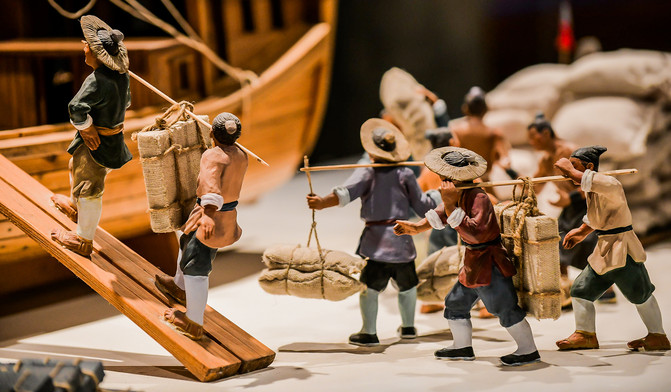
Second stop: Daoxiang Wangting
In modern China, people have a homesickness that comes with water. In this ancient land, there is rarely a city like Suzhou, which can simultaneously cover the the Taihu Lake Lake and the Canal, which have a strong poetic water system in the south of the Yangtze River.
The reputation of the Taihu Lake Lake Basin as a land of plenty has been known all over the world since ancient times. The Tangtang Beijing Hangzhou Grand Canal was once a symbol of the great rejuvenation of the Chinese nation. Today, Suzhou's rise and prosperity in both cultural and economic fields are inseparable from these two water systems.
Wangting, formerly known as Yuting, was once named Hexi. It is located in the northwest of Suzhou, on the bank of the Taihu Lake Lake, and bounded by Wangyu River with Wuxi City. It is an ancient town with nearly 2000 years of history. As the only town with canal and the Taihu Lake Lake features in Suzhou, it is the specimen of Suzhou's ancient civilization and the epitome of Suzhou's development.



Check in location: Canal Park
The first shovel of soil for the Beijing Hangzhou Grand Canal was excavated at Wangting. In 495 BC, King Fuchai of Wu ordered the excavation of a canal from Wangting, Suzhou, through Wuxi, to reach Benniu Town, Changzhou, in order to compete with the state of Chu. It has been more than 2500 years since then.
After thousands of years of accumulation, the Wangting section of the Beijing Hangzhou Canal has left an extremely rich cultural heritage: remains of water systems such as Sandun Port, Guanji Bridge Port, Mudan Port, Renxiang Port, and Nanhe Port; remains of ancient sites such as the Changzhou Garden, Moon City, Huangting Stele, Shen Mansion, and Yinghu Temple; unearthed cultural relics from various periods such as the Songze Culture and the Neolithic Age, as well as a large amount of intangible cultural heritage.
The Canal Park, located to the east of the Beijing Hangzhou Grand Canal and covering an area of 200000 square meters with a landscape area of 198000 square meters, is located in the central town area of Wangting. It is divided into two parts: the section along the Yunhe River and the section along the Yuting Road, forming a T-shape. It is divided into six parts: agricultural experience area, leisure living area, ancient architectural landscape area, industrial experience area, renovated art area, and Fuqian leisure waterfront area, showcasing Wangting's historical and cultural heritage, industrial culture, modern agricultural culture, and citizen leisure culture.



As the core area of the Canal Park, the Wangting Historical and Cultural Block has restored buildings such as the Wangyun Pavilion, Millennium Wangting Pavilion, and Wangting Post, fully exploring the historical and cultural heritage of Wangting, with the purpose of protection, utilization, and inheritance. At the same time, with the theme of "Cultural Living Room Looking Back at the Imperial Pavilion", it deeply explores the cultural characteristics of Wangting. On the basis of catering to the characteristics of the ancient architecture itself, it fully utilizes modern media technology and artistic means to showcase a "living" and "intelligent" cultural exhibition hall, and is committed to becoming a concentrated display window for Wangting's historical and cultural heritage, a cultural activity center for Wangting's intangible cultural heritage, and the first stop for Wangting's cultural tourism.



Clock in place: North the Taihu Lake Lake (Wangting) Scenic Spot
Wangting not only has canals, but also has the vast North the Taihu Lake Lake.
On one side of the North the Taihu Lake Lake Avenue is a nearly seven kilometer lakeside landscape, and on the other side is a vast expanse of fertile land and scattered natural villages, which is a realistic portrayal of a land of plenty.
The scenic area has a rice area of 7218 acres, relying on a 10000 acre ecological high-quality grain production base, integrating efficient ecological agriculture, deep grain processing, leisure sightseeing tourism, and agricultural cultural experience. In addition, modern bases engaged in vegetable and fruit production produce various pollution-free, green organic vegetables and fruits. Wangting Town became one of the 105 agricultural characteristic towns announced by the Jiangsu Provincial Agriculture Commission in 2017.



While comprehensively integrating the the Taihu Lake Lake and agricultural tourism resources, the scenic spot has designed and developed a series of high-quality tourism routes and products, interspersed with ecological scenic spots with different themes, such as Daoxiang Park, rape flower sea, colorful golden sand beach, custom Shundi River, happy little world, and 24 solar terms impression pastoral.
The Nanhe Port characteristic rural and farmhouse themed street with the brand of "Rice Fragrance Home" can provide unique farmhouse cuisine. In addition to leisure farms such as "Lin Mei Mei" Strawberry Park, Yutian Jingyuan, and Kuan Xin Yuan, there are also harvested blueberry orchards, cherry orchards, vineyards, as well as numerous planting bases such as Jin Xiang Yi Rice, Yuhe Vegetables, private vegetable gardens, and Maitian Hesheng Family Farm to experience agricultural fun.



Check in location: Raspberry and Strawberry Garden
Suzhou has always maintained the title of "Land of Fish and Rice", and high-quality and efficient modern agriculture is the direction of Suzhou's agricultural efforts.
Today, while farming in Suzhou, new varieties and technologies are emerging one after another, and even the "old style" may not be suitable for consumption. What Suzhou agriculture needs the most are new types of professional farmers, who not only need to have culture, but also need to understand technology and be able to manage.
Lin Yaping, a representative of the 15th National People's Congress of Suzhou City, is also the only leading figure in poverty alleviation selected by the Central Committee of the Communist Youth League of China. After graduating from a master's degree in plant nutrition at Yangzhou University, she has rooted herself in rural areas, from a vegetable base technician to a strawberry planting expert, and then to the vice president of Suzhou Yuting Modern Agricultural Industrial Park Development Co., Ltd. With her wisdom and sweat, she is promoting the development of local ecological agriculture.



What are the characteristics of strawberries grown by Lin Yaping?
First, she improved and innovated a new planting mode of "rice strawberry paddy upland rotation". Second, she adopted the "Internet plus" mode for marketing promotion. In addition, she developed new projects in the strawberry garden, such as fishing, green vegetable planting, parent-child activities, and outreach activities.
The ecological development path of the Raspberry and Strawberry Orchard has received praise from the European Union Agriculture Commission for being willing to stay for a day.



Clock in place: Cafe by the Taihu Lake Lake
In a cafe near the Taihu Lake Lake, Lu Fengying greets guests with a pure "Wangting slang".
These guests were once her childhood playmates playing by the fields and lakes, or her neighbor Uncle with calluses on his hands and wrinkles on his face engraved with the vicissitudes of time.
Only in places close to nature can we be closer to the soul. When the romantic coffee meets the tranquility and tranquility of the fields, it is like a close friend who never leaves.
Under the brilliant starry sky filled with the chirping of frogs, as the years gradually age, suddenly looking back, a lamp, a cup of coffee, those familiar faces that have never forgotten you, are still guarding your years and being safe!


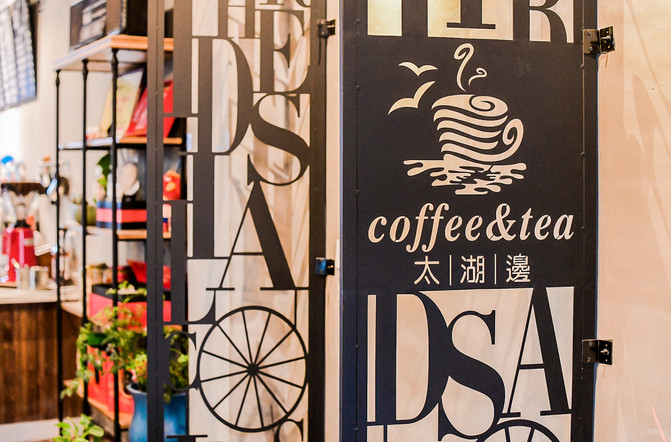
Food recommendation: Yilu Daohua
Yilu Daohua is one of the earliest farmhouses in Wangting. Its signature dishes are Xiangyou Eel Paste, smoked fish, Suzhou style white shih dish, health preserving mandarin fish, rice meat, coconut Chicken rolls, and iron plate seafood tofu. With the taste of improved Suzhou style food, it is highly praised on the Internet.
The interior is decorated in a simple and rustic style. On the left side of the door, there is a whole screen of recipes, which is dazzling. On the right side, there is a large stove, and the water vapor is steaming.
I heard that their chefs are all chefs hired by star rated hotels in the park. Among them, the Soviet style new style smoked fish has a crispy surface when bitten down, but the fish inside is still fresh and tender. It can be said that the entire Wangting Town cannot find such delicious smoked fish.

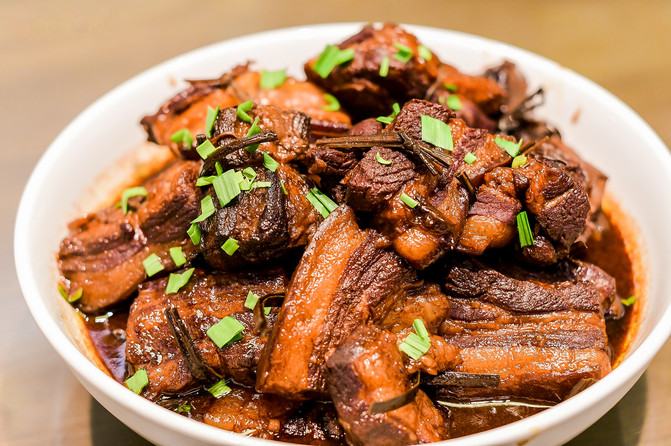

Accommodation recommendation: Moshe Homestay
The top ten boutique homestays for Suzhou rural tourism in 2019, facing the Daoxiang Park directly, and behind them are thousands of hectares of fertile land and scattered natural villages.
The homestay has two buildings, and in addition to 11 exquisitely styled guest rooms, it is also equipped with small multifunctional meeting rooms, book bars, tea rooms, and leisure facilities.
This is not only an art and cultural space that combines guest rooms, bookstores, tea spaces, and photography, but also the best place for leisure vacation, birthday parties, party building, and relaxation.



Day 2 itinerary
First stop: Lotus Island
Lotus Island is located in the center of West Lake, Central Lake, and East Lake in Yangcheng Lake, with an area of about 3 square kilometers. It resembles a blooming lotus and is embedded in the lake, hence the name "Lotus Island".
According to legend, there was a temple on Lotus Island in ancient times, with a well inside. Every July 30th, a white lotus blooms in the well, and people can ascend to the sky by sitting on it.
To climb the island, you need to take a cruise ship and gallop across the lake, with blue waves covering thousands of miles. You can shuttle between the fences for raising hairy crabs, and the warm and fresh breeze carries water vapor.
More than 200 households on the island, with sunny paths, willow streams and plum pavilions, stone bridges and small boats, are as common as in Jiangnan.



Check in location: Yiyuan
Go to Lianhua Island in Yangcheng Lake for outings, eat, drink, and have fun. Of course, it's necessary to visit the Memory Garden and experience the local ecological production, lifestyle, and folk culture in Jiangnan.
The Yiyuan Museum is located in the northeast corner of Lianhua Island. The unique water town style Yiyuan Folk Museum brings together thousands of years of Jiangnan folk customs, which are exquisite and rich, rich, rich, and stretching.
Inside, there are carefully designed fishing halls, folk customs halls, water town wedding halls, Yangcheng clothing halls, historical and cultural halls, etc. Through artistic techniques, the folk customs of the entire Jiangnan water town are spread from point to surface, restoring the living scenes of the people in Yangcheng Lake in a three-dimensional way, reflecting the unique water town folk culture of Lianhua Island.



Check in location: Sanyuan Mansion
In the imperial examination society that lasted for over 1300 years, Suzhou produced nearly 3000 scholars, among whom 50 were civil and military officials, earning the national title of "hometown of officials and officials". Among these fifty top scorers, Qian Qian is the only one who has won three consecutive championships (first place in the township, provincial, and palace exams). Qian Longqin bestowed the "Three Yuan Archway" on it, and local officials in Suzhou Prefecture built the "Three Yuan Archway" archway for it.
"San Yuan Mansion" is a typical ancient residential building in a water town in Jiangnan, formerly known as "Lianhua Residence". It is located in the southern section of Lianhua Island in Yangcheng Lake and was the residence of Qian Zhenchong, the ancestor of the Qian family, who retired due to avoiding social unrest.
Through the introduction of Qian's great grandfather Qian Zhongxie and other members of the Qian family in the courtyard, the stories of Qian's "three yuan in a row", "six yuan in a row", and "emperor bestowing poetry" are presented, showcasing the fine tradition of the Qian family's emphasis on filial piety and fraternity for generations, farming and reading to pass on the family, poetry and books to benefit the world, advocating literature and etiquette, being knowledgeable and determined, as well as the emphasis on literature and education in the Wu region.



Food recommendation: Yangcheng Lake hairy crab
The Yuanhe Weiting Chronicle records that river crabs are the largest, with green shells and red feet, known as golden claw crabs, weighing around 500 pounds, and having the richest taste when they leave Yangcheng Lake.
Due to its good water quality, about 65% of the bottom of Yangcheng Lake is hard soil, making it particularly suitable for the growth of reptiles in the water. In addition, the abundant aquatic plants at the bottom of the lake, wild river shrimp, screws, and other aquatic animals and plants provide a very good environment for the growth of hairy crabs.
Yangcheng Lake is known for its clear water hairy crab, which ranks first in the world and is known as the "king of crabs".
Waiting for the fragrance of osmanthus to waft, watching the lush autumn chrysanthemums outside the farmyard, when the crab is beautiful and creamy red, holding a turtle to drink wine, sitting in the lotus pond listening to the swaying lotus leaves, inviting three or five friends, listening to the chirping of returning birds and the chirping of frogs, a cup of old wine, inviting fairies to drink together, and being intoxicated by the world's wind and moon, how joyful!
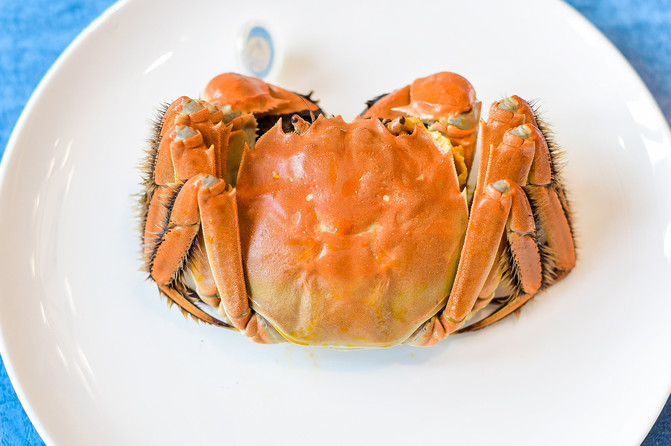


Second stop: Fengmenglong Village
Feng Menglong was a famous writer, thinker, and opera performer in the late Ming Dynasty. He left behind over fifty works of more than 25 million words throughout his life, depicting the true, good, and beautiful characters in the world, as well as famous sayings such as "wealth and honor have no roots, all come from diligence" and "being harsh without making money, being loyal without losing money", forming the highland of folk value.
Feng Menglong, born on Fenggeng in Xinxiang Village, Huangdai Town, Xiangcheng, has his main works including "Three Words" such as "Yu Shi Ming Yan", "Alert to the World", "Awakening to the World", "Ancient and Modern Tan Gai", "Shuang Xiong Ji", "Ping Yao Ji", and so on.
Among them, "San Yan" provided a model for studying social life in the late Ming Dynasty. The literary images he created, such as Du Shiniang and Wang Kui, who sold oil, have long become eternal memories of Chinese literature.
Feng Menglong is not only the business card of Xiangcheng, but also an important part of Xiangcheng's cultural construction. The cultural spirit condensed in Feng Menglong is an important crystallization of the historical heritage of Xiangcheng District and an important support for promoting the modern urban spirit of Xiangcheng.



Check in location: Former Residence of Feng Menglong
The former residence of Feng Menglong, with a brick and wood structure facing south and facing north, is a typical Ming Dynasty Jiangnan architecture, surrounded by white powder walls and small green tiles, elegant and unique.
Entering the former residence, there are three small rooms in the front hall and a kitchen in the east, where you can see the shadow of the Jiangnan water town; The west room is the butler's room and the miscellaneous room, and the middle is the guest hall. In the courtyard, osmanthus and pomegranate trees are planted. The pomegranate flowers bloom in May and June every year, and here they are as bright as clouds, red as fire, and exceptionally bright.
In the mid autumn season, the osmanthus blooms in full bloom, and the fragrance of Chen fills the nose. At night, when the wheels are still and round, I enjoy drinking and appreciating the osmanthus. It's really pleasant.
Entering the back hall, there is a central hall in the middle, which is used for entertaining guests. The decoration is extremely simple, enough to show the integrity and simplicity of the owner back then; The eastern room is the bedroom and study of Feng Menglong's parents, with a strong aroma of books in the room, while the western room is the bedroom of Feng Menglong's three brothers; The West Hall is the school for the three brothers Feng Menglong and the children in the village, as if you can still see the scenes of children listening to classes and playing back then.
Behind the former residence, there is a dense bamboo forest with branches that bend but do not break. It is upright and free spirited, upright and noble, and elegant and handsome, which is also Feng Menglong's pursuit in life.



Check in location: Feng Menglong Academy
The Feng Menglong Academy, with an area of 1073 square meters, integrates reading, collection, engraving, and cultural education. It has nearly 10000 books on Feng Menglong's cultural expertise, making it the most comprehensive academy with the most Feng Menglong books both domestically and internationally. Many of them are rare surviving books.
The academy is composed of functional areas such as the reception center, San Yan Bookstore, Mo Han Zhai, and Menglong Academy. The San Yan Bookstore is a space that integrates the collection of Feng Menglong's related books, public reading, multimedia interaction, and cultural relics display. Based on Feng Menglong's life experience, its works are displayed one by one. In the reading area, a large staircase form is set up, allowing tourists to read books and listen to lectures freely.



Check in location: Feng Menglong Memorial Hall
Pink walls and black tiles, classic Jiangnan water town style, with a total construction area of 394.1 square meters, featuring a preface hall and four exhibition halls.
The preface hall interweaves the "words" from Feng Menglong's "Three Words", forming a form of dialogue between ancient and modern times.
Exhibition Hall 1 showcases Feng Menglong's achievements in Shouning County from the perspectives of integrity, diligence, and love for the people.
Exhibition Hall 2 showcases the physical books and prints of Feng Menglong's "Three Words", creating a picturesque wall of Ming Dynasty people's lives and showcasing Feng Menglong's literary achievements.
Exhibition Hall Three showcases Feng Menglong's theatrical works such as "Fengliu Dream" and "Handan Chronicle" through the use of Soviet style architectural circular openings and projection techniques, while also outlining the local customs and traditions of Suzhou during the Ming Dynasty, highlighting the unique characteristics of Wu.
Exhibition Hall Four showcases the research achievements of Feng Menglong both domestically and internationally, as well as the Xiangcheng High tech Zone's focus on Feng Menglong, creating a comprehensive development landscape of agriculture, culture, and tourism.

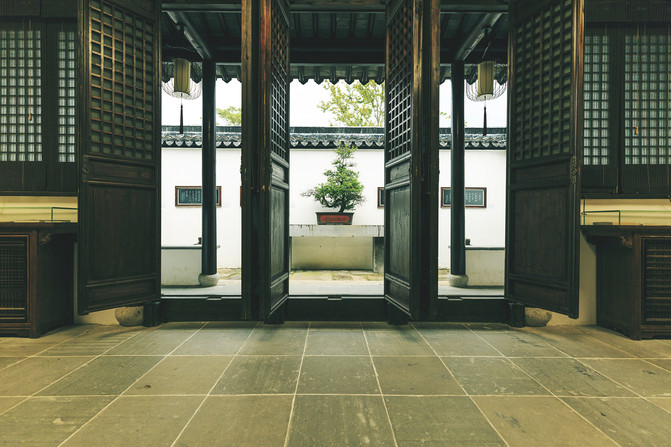

Best filming location: Qinglian Pond
In the refreshing autumn, in the lotus pond in front of the Four Knowledge Hall, the space lotus still blooms, revealing its fragrance. Tourists in groups of three or five shuttle along the small path between the lotus ponds, as seen from a distance in a painting.
The Mid Autumn Festival has already passed, why are the lotus flowers blooming so well here? The lotus in Fengmenglong Village has a unique variety! This is a white lotus seed bred through space mutation - space lotus!
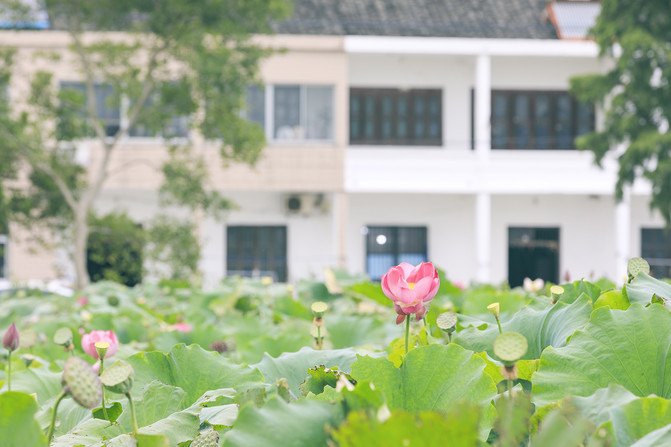

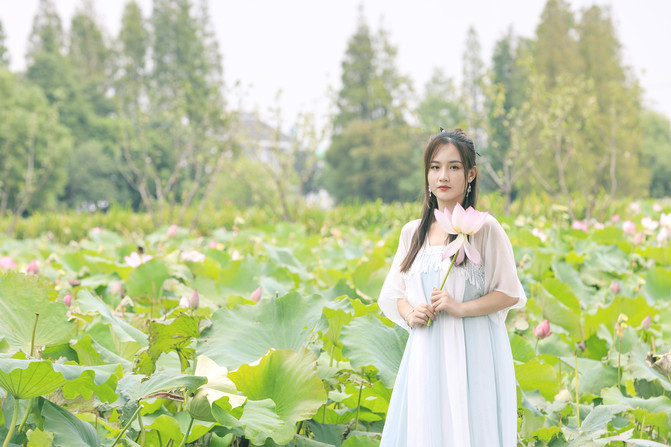
Recommended picking site: kiwifruit planting base
From May to late November, the fruits in Fengmenglong Village can be said to be continuously harvested in three seasons. At present, the entire forest and fruit base covers an area of about 1000 acres, covering multiple fruit varieties such as blueberries, waxberries, pears, and kiwifruit.
At the kiwifruit planting base, kiwifruit with plump flesh and tempting fragrance hang on the branches, and fruit farmers shuttle through the orchard, busy picking fruits.
The red heart kiwifruit planted here is a wild kiwifruit seed brought back from the deep mountains of Sichuan in 2008. Kiwifruit experts were hired to improve and cultivate it. After 11 years of exploration, now, regardless of taste or nutritional value, red heart kiwifruit can be considered an upgraded version of ordinary kiwifruit.
Fengmenglong Village has a total planting area of 276 acres of kiwifruit. After the launch of red heart kiwifruit, yellow heart and green heart kiwifruit will also enter the harvesting period one after another, and are expected to be launched during the "National Day Golden Week".
After entering autumn, local fruits such as grapes and peaches in Fengmenglong Village have also matured and are gradually being opened for picking.



Check in location: Agricultural Culture Park
The Feng Menglong Agricultural Culture Park covers an area of 37000 square meters, with the theme of "Visiting Feng Menglong Village and Entering Feng Menglong's World". It has set up projects such as the Three Words Flower Garden, Water Car Array, Grandma's Home, Agricultural Fun Field, and Four Seasons Agricultural Corridor, showcasing the agricultural culture and rural life in Feng Menglong's literary works.
Based on the story of Feng Menglong's novel "The Oil Man monopolizes the Flower Queen", the Oil Man Oil Shop, designed to restore traditional oil extraction techniques, has attracted the attention of many tourists. The oil workshop integrates ancient methods of oil extraction, tourism and shopping, and the restoration of story scenes, allowing people to rediscover their nostalgia in a relaxed interaction.



Food recommendation: Mingya Liuzao Family
The first farmhouse in Fengmenglong Village, Mingya Liuzao Family, was renovated on the basis of a two-story small building in the farmhouse. Standing on the second floor, pushing open the window and looking out, the small flowers on the side of the building are in full bloom, and the trees are full of fruits. In the distance, the fields rolling with golden rice waves are refreshing.
The best thing, of course, is the food. Rice is local rice, fragrant and glutinous, and the dishes are grown by the farmers themselves. They use the big stove to cook authentic farm dishes. Their boiled fish fillet, egg dumplings, Braised pork belly, wild eel stew soup, together with rice made from six local stoves, are authentic and fragrant.



Accommodation recommendation: Chunshen Lake Hotel
The total construction area of the hotel is over 40000 square meters, built near the lake with the concept of "ecology and culture", and the environment is elegant and peaceful. You can enjoy a panoramic view of Chunshen Lake, which is also a unique combination of Soviet style garden style, with the charm of mountains and rivers, as well as the charm of forests and springs.
The hotel has comfortable and luxurious guest rooms, a 1000 square meter banquet hall, 29 private rooms, and 11 conference rooms; The catering mainly focuses on Cantonese cuisine, Chaoshan cuisine, and local cuisine, integrating Western style restaurants, banquet halls, multifunctional conference halls, golf practice ranges, fishing, picking gardens, fitness centers, karaoke nightclubs, quiet bars, and lively bars.



Day 3: Suzhou Chinese Farmers Harvest Festival:
The one month 2019 Suzhou Chinese Farmers Harvest Festival opened on the 23rd in Fengmenglong Village.
The event was held at the Anti Corruption Culture Training Center in Fengmenglong Village, surrounded by orchards and fragrant rice and beans. The opening ceremony showcased the development and changes of Suzhou's beautiful countryside over the past 70 years, as well as the tremendous changes in the production and life of farmers, in the form of a situational drama called "Tian Dao Hui Qin".
Feng Menglong's mountain songs and Yangcheng's fishing songs resounded throughout the venue, and hardworking and enthusiastic farmer friends sang and danced, celebrating this harvest festival with the characteristics of a land of fish and rice in Jiangnan, together with the vast number of citizens and tourists.


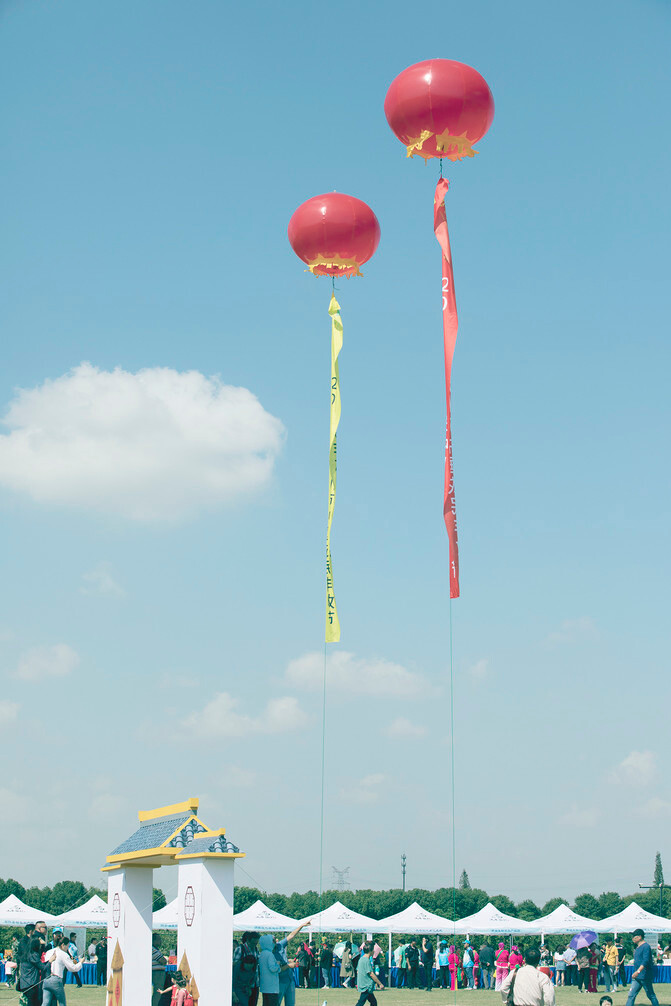
On stage, there are light songs and graceful dances, the sound of drums, and off stage performances are also taking place simultaneously. Several tens of meters away from the opening ceremony, the agricultural product market area set up by the organizer is bustling with people, and the booths of more than ten agricultural enterprises, including the Huangdai Circular Agriculture Demonstration Zone, Weitang Modern Agriculture Demonstration Park, and Caohu Biological Agriculture Industrial Park, are lined up in a row, attracting many customers.
This Harvest Festival has launched a series of projects with high participation and experience from citizens and tourists, including "Let the People Talk Together to Welcome the Harvest", "Let the People Celebrate the Harvest", "Enjoy the Harvest in Time Square", "E-commerce Promotions to Benefit the Harvest", and interactive agricultural games to allow local villagers and tourists to experience and share the joy of harvest together.



Previous Article:Multi faceted city, experiencing the unique beauty of Suzhou
Next Article:Take your dad to Jiangnan Suzhou (Zhouzhuang, Tongli, Luzhi, Mudu, Jinxi, Qiandeng) for an 8-day free trip
